Cement Market Insights 2025, Analysis and Forecast to 2030, by Manufacturers, Regions, Technology, Application, Product Type
- Single User License (1 Users) $ 4,000
- Team License (2~5 Users) $ 5,000
- Corporate License (>5 Users) $ 6,000
Introduction
The cement industry is a cornerstone of global construction, providing the essential binding material for infrastructure, residential, and commercial projects worldwide. Cement, primarily produced through the calcination of limestone and other materials, is a high-energy, carbon-intensive product, contributing 7-8% of global greenhouse gas emissions. In 2024, global cement demand declined by 3.2%, with sales totaling 3.853 billion tons, a reduction of 122 million tons year-over-year, marking the lowest level since 2012 and a 10% drop from the 2021 peak. This downturn reflects a combination of economic slowdowns, environmental pressures, and structural overcapacity, particularly in mature markets. The industry faces increasing scrutiny under global decarbonization goals, such as the "dual carbon" targets, which aim to peak emissions before 2030 and achieve carbon neutrality by 2060 in key regions. These pressures have intensified efforts to improve energy efficiency and reduce capacity, though progress remains slow, with structural overcapacity persisting as a significant challenge. Cement’s versatility spans applications like real estate, highways, railways, bridges, and airports, with production dominated by a few large players leveraging economies of scale.
Market Size and Growth Forecast
The cement market is expected to achieve a valuation of USD 543-548 billion by 2025, driven by steady demand from infrastructure development and urban growth in developing regions. The anticipated CAGR of 2%-3% through 2030 underscores a cautious growth trajectory, balancing rising construction needs with environmental constraints and capacity rationalization efforts. This moderate pace reflects the industry’s transition toward sustainability while maintaining its critical role in global development.
Regional Analysis
Asia Pacific, led by China and India, expects a growth rate of 2.5%-3.5%, fueled by China’s ongoing urbanization and India’s infrastructure push, though China’s market trends show a plateauing demand due to overcapacity and stricter environmental regulations. Africa anticipates growth of 2%-3%, driven by rapid urbanization and construction in countries like Nigeria and Kenya, with market trends indicating increasing foreign investment in local production. Europe projects a slower growth of 1%-2%, with demand tied to renovation projects and sustainable construction, though stringent carbon policies temper expansion. North America expects growth of 1.5%-2.5%, supported by infrastructure renewal in the U.S., with trends favoring low-carbon cement adoption. South America anticipates growth of 1%-2%, with Brazil and Mexico leading, though economic volatility impacts consistency.
Application Analysis
Real Estate: Projected to grow at 2%-3%, this segment remains the largest, driven by residential and commercial construction, with trends shifting toward green building materials.
Highway: Expected growth of 2%-3.5%, fueled by government-led road projects, particularly in emerging markets, with a focus on durable, high-performance cement.
Railway: Anticipated at 1.5%-2.5%, driven by high-speed rail investments in Asia and Europe, emphasizing strength and longevity.
Bridge: Projected at 2%-3%, reflecting infrastructure upgrades, with trends favoring specialized cement for load-bearing structures.
Airports: Expected at 1.5%-2.5%, tied to global aviation growth, with demand for high-strength cement increasing.
Others: Anticipated at 1%-2%, including niche uses like dams, with steady but slower growth.
Type Analysis
Portland Cement: Projected at 2%-3%, the dominant type due to its versatility, with trends toward low-carbon variants.
Aluminate Cement: Expected at 1.5%-2.5%, used in high-temperature applications, with niche growth in industrial projects.
Sulphate Cement: Anticipated at 1%-2%, valued for chemical resistance, with steady demand in harsh environments.
Key Market Players
Holcim: A Swiss-based leader, Holcim focuses on sustainable cement solutions globally.
Heidelberg Materials: A German giant, it emphasizes innovation in low-carbon cement.
Cemex: A Mexican firm, Cemex excels in integrated cement and concrete production.
InterCement: A Brazilian player, it serves South American markets with a broad portfolio.
CRH: An Irish company, CRH diversifies across cement and building materials.
Buzzi Unicem: An Italian firm, it targets premium cement markets in Europe and North America.
Eurocement: A Russian leader, it focuses on Eastern Europe and Central Asia.
CNBM: A Chinese state-owned entity, it dominates domestic production and exports.
Anhui Conch Cement: A Chinese giant, it leads in cost-efficient production.
UltraTech Cement: An Indian powerhouse, it drives growth in South Asia.
China Resources Cement: A Chinese firm, it focuses on southern China’s construction boom.
Votorantim Cimentos: A Brazilian company, it serves global markets with a strong regional base.
Taiwan Cement: A Taiwanese leader, it targets Asia Pacific demand.
Cimpor: A Portuguese firm, it operates across Europe and emerging markets.
Taiheiyo: A Japanese company, it specializes in high-quality cement for infrastructure.
BBMG: A Chinese player, it integrates cement with construction services.
Tangshan Jidong Cement: A Chinese firm, it focuses on northern China’s industrial needs.
Shree Cements: An Indian company, it emphasizes energy-efficient production.
Ambuja Cements: An Indian firm, it caters to India’s urban growth.
Titan Cement: A Greek company, it serves Europe and beyond with sustainable offerings.
Semen Indonesia Group (SIG): An Indonesian leader, it dominates Southeast Asia.
Dalmia Bharat: An Indian player, it focuses on premium cement segments.
PT Indocement Tunggal Prakarsa Tbk.: An Indonesian firm, it supports regional infrastructure.
Porter’s Five Forces Analysis
●Threat of New Entrants: Low. High capital costs, regulatory barriers, and overcapacity deter new players.
●Threat of Substitutes: Moderate. Alternatives like steel and timber compete in some applications, but cement’s cost-effectiveness prevails.
●Bargaining Power of Buyers: High. Large construction firms leverage overcapacity to negotiate prices.
●Bargaining Power of Suppliers: Moderate. Limestone availability is widespread, but energy costs give suppliers some leverage.
●Competitive Rivalry: High. Global giants compete on price, sustainability, and scale.
Market Opportunities and Challenges
Opportunities
●Infrastructure Growth: Investments in emerging markets drive demand.
●Sustainability Push: Low-carbon cement gains traction with policy support.
●Urbanization: Rapid city growth in Asia and Africa boosts consumption.
●Technological Advances: Energy-efficient production enhances competitiveness.
●Recycling Potential: Circular economy initiatives reduce raw material dependency.
Challenges
●Environmental Pressure: Carbon regulations increase costs and limit output.
●Overcapacity: Structural surplus depresses prices.
●Economic Slowdowns: Reduced construction activity impacts sales.
●Substitution Trends: Alternative materials challenge traditional cement use.
●Energy Costs: Rising fuel prices strain profitability.
Chapter 1 Executive Summary
Chapter 2 Abbreviation and Acronyms
Chapter 3 Preface
3.1 Research Scope
3.2 Research Sources
3.2.1 Data Sources
3.2.2 Assumptions
3.3 Research Method
Chapter 4 Market Landscape
4.1 Market Overview
4.2 Classification/Types
4.3 Application/End Users
Chapter 5 Market Trend Analysis
5.1 Introduction
5.2 Drivers
5.3 Restraints
5.4 Opportunities
5.5 Threats
Chapter 6 Industry Chain Analysis
6.1 Upstream/Suppliers Analysis
6.2 Cement Analysis
6.2.1 Technology Analysis
6.2.2 Cost Analysis
6.2.3 Market Channel Analysis
6.3 Downstream Buyers/End Users
Chapter 7 Latest Market Dynamics
7.1 Latest News
7.2 Merger and Acquisition
7.3 Planned/Future Project
7.4 Policy Dynamics
Chapter 8 Trading Analysis
8.1 Export of Cement by Region
8.2 Import of Cement by Region
8.3 Balance of Trade
Chapter 9 Historical and Forecast Cement Market in North America (2020-2030)
9.1 Cement Market Size
9.2 Cement Demand by End Use
9.3 Competition by Players/Suppliers
9.4 Type Segmentation and Price
9.5 Key Countries Analysis
9.5.1 United States
9.5.2 Canada
9.5.3 Mexico
Chapter 10 Historical and Forecast Cement Market in South America (2020-2030)
10.1 Cement Market Size
10.2 Cement Demand by End Use
10.3 Competition by Players/Suppliers
10.4 Type Segmentation and Price
10.5 Key Countries Analysis
10.5.1 Brazil
10.5.2 Argentina
10.5.3 Chile
10.5.4 Peru
Chapter 11 Historical and Forecast Cement Market in Asia & Pacific (2020-2030)
11.1 Cement Market Size
11.2 Cement Demand by End Use
11.3 Competition by Players/Suppliers
11.4 Type Segmentation and Price
11.5 Key Countries Analysis
11.5.1 China
11.5.2 India
11.5.3 Japan
11.5.4 South Korea
11.5.5 Asean
11.5.6 Australia
Chapter 12 Historical and Forecast Cement Market in Europe (2020-2030)
12.1 Cement Market Size
12.2 Cement Demand by End Use
12.3 Competition by Players/Suppliers
12.4 Type Segmentation and Price
12.5 Key Countries Analysis
12.5.1 Germany
12.5.2 France
12.5.3 United Kingdom
12.5.4 Italy
12.5.5 Spain
12.5.6 Belgium
12.5.7 Netherlands
12.5.8 Austria
12.5.9 Poland
12.5.10 Russia
Chapter 13 Historical and Forecast Cement Market in MEA (2020-2030)
13.1 Cement Market Size
13.2 Cement Demand by End Use
13.3 Competition by Players/Suppliers
13.4 Type Segmentation and Price
13.5 Key Countries Analysis
13.5.1 Egypt
13.5.2 Israel
13.5.3 South Africa
13.5.4 Gulf Cooperation Council Countries
13.5.5 Turkey
Chapter 14 Summary For Global Cement Market (2020-2030)
14.1 Cement Market Size
14.2 Cement Demand by End Use
14.3 Competition by Players/Suppliers
14.4 Type Segmentation and Price
Chapter 15 Global Cement Market Forecast (2021-2026)
15.1 Cement Market Size Forecast
15.2 Cement Demand Forecast
15.3 Competition by Players/Suppliers
15.4 Type Segmentation and Price Forecast
Chapter 16 Analysis of Global Key Vendors
15.1 Holcim
15.1.1 Company Profile
15.1.2 Main Business and Cement Information
15.1.3 SWOT Analysis of Holcim
15.1.4 Holcim Cement Sales, Revenue, Price and Gross Margin (2020-2025)
15.2 Heidelberg Materials
15.2.1 Company Profile
15.2.2 Main Business and Cement Information
15.2.3 SWOT Analysis of Heidelberg Materials
15.2.4 Heidelberg Materials Cement Sales, Revenue, Price and Gross Margin (2020-2025)
15.3 Cemex
15.3.1 Company Profile
15.3.2 Main Business and Cement Information
15.3.3 SWOT Analysis of Cemex
15.3.4 Cemex Cement Sales, Revenue, Price and Gross Margin (2020-2025)
15.4 InterCement
15.4.1 Company Profile
15.4.2 Main Business and Cement Information
15.4.3 SWOT Analysis of InterCement
15.4.4 InterCement Cement Sales, Revenue, Price and Gross Margin (2020-2025)
15.5 CRH
15.5.1 Company Profile
15.5.2 Main Business and Cement Information
15.5.3 SWOT Analysis of CRH
15.5.4 CRH Cement Sales, Revenue, Price and Gross Margin (2020-2025)
15.6 Buzzi Unicem
15.6.1 Company Profile
15.6.2 Main Business and Cement Information
15.6.3 SWOT Analysis of Buzzi Unicem
15.6.4 Buzzi Unicem Cement Sales, Revenue, Price and Gross Margin (2020-2025)
15.7 Eurocement
15.7.1 Company Profile
15.7.2 Main Business and Cement Information
15.7.3 SWOT Analysis of Eurocement
15.7.4 Eurocement Cement Sales, Revenue, Price and Gross Margin (2020-2025)
15.8 CNBM
15.8.1 Company Profile
15.8.2 Main Business and Cement Information
15.8.3 SWOT Analysis of CNBM
15.8.4 CNBM Cement Sales, Revenue, Price and Gross Margin (2020-2025)
15.9 Anhui Conch Cement
15.9.1 Company Profile
15.9.2 Main Business and Cement Information
15.9.3 SWOT Analysis of Anhui Conch Cement
15.9.4 Anhui Conch Cement Cement Sales, Revenue, Price and Gross Margin (2020-2025)
15.10 UltraTech Cement
15.10.1 Company Profile
15.10.2 Main Business and Cement Information
15.10.3 SWOT Analysis of UltraTech Cement
15.10.4 UltraTech Cement Cement Sales, Revenue, Price and Gross Margin (2020-2025)
15.11 China Resources Cement
15.11.1 Company Profile
15.11.2 Main Business and Cement Information
15.11.3 SWOT Analysis of China Resources Cement
15.11.4 China Resources Cement Cement Sales, Revenue, Price and Gross Margin (2020-2025)
15.12 Votorantim Cimentos
15.12.1 Company Profile
15.12.2 Main Business and Cement Information
15.12.3 SWOT Analysis of Votorantim Cimentos
15.12.4 Votorantim Cimentos Cement Sales, Revenue, Price and Gross Margin (2020-2025)
15.13 Taiwan Cement
15.13.1 Company Profile
15.13.2 Main Business and Cement Information
15.13.3 SWOT Analysis of Taiwan Cement
15.13.4 Taiwan Cement Cement Sales, Revenue, Price and Gross Margin (2020-2025)
15.14 Cimpor
15.14.1 Company Profile
15.14.2 Main Business and Cement Information
15.14.3 SWOT Analysis of Cimpor
15.14.4 Cimpor Cement Sales, Revenue, Price and Gross Margin (2020-2025)
15.15 Taiheiyo
15.15.1 Company Profile
15.15.2 Main Business and Cement Information
15.15.3 SWOT Analysis of Taiheiyo
15.15.4 Taiheiyo Cement Sales, Revenue, Price and Gross Margin (2020-2025)
15.16 BBMG
15.16.1 Company Profile
15.16.2 Main Business and Cement Information
15.16.3 SWOT Analysis of BBMG
15.16.4 BBMG Cement Sales, Revenue, Price and Gross Margin (2020-2025)
15.17 Tangshan Jidong Cement
15.17.1 Company Profile
15.17.2 Main Business and Cement Information
15.17.3 SWOT Analysis of Tangshan Jidong Cement
15.17.4 Tangshan Jidong Cement Cement Sales, Revenue, Price and Gross Margin (2020-2025)
15.18 UltraTechCement
15.18.1 Company Profile
15.18.2 Main Business and Cement Information
15.18.3 SWOT Analysis of UltraTechCement
15.18.4 UltraTechCement Cement Sales, Revenue, Price and Gross Margin (2020-2025)
15.19 Shree Cements
15.19.1 Company Profile
15.19.2 Main Business and Cement Information
15.19.3 SWOT Analysis of Shree Cements
15.19.4 Shree Cements Cement Sales, Revenue, Price and Gross Margin (2020-2025)
15.20 Ambuja Cements
15.20.1 Company Profile
15.20.2 Main Business and Cement Information
15.20.3 SWOT Analysis of Ambuja Cements
15.20.4 Ambuja Cements Cement Sales, Revenue, Price and Gross Margin (2020-2025)
Please ask for sample pages for full companies list
Table Research Scope Of Cement Report
Table Data Sources Of Cement Report
Table Major Assumptions Of Cement Report
Table Cement Classification
Table Cement Applications List
Table Drivers Of Cement Market
Table Restraints Of Cement Market
Table Opportunities Of Cement Market
Table Threats Of Cement Market
Table Raw Materials Suppliers List
Table Different Production Methods Of Cement
Table Cost Structure Analysis Of Cement
Table Key End Users List
Table Latest News Of Cement Market
Table Merger And Acquisition List
Table Planned/Future Project Of Cement Market
Table Policy Of Cement Market
Table 2020-2030 Regional Export Of Cement
Table 2020-2030 Regional Import Of Cement
Table 2020-2030 Regional Trade Balance
Table 2020-2030 North America Cement Market Size And Market Volume List
Table 2020-2030 North America Cement Demand List By Application
Table 2020-2025 North America Cement Key Players Sales List
Table 2020-2025 North America Cement Key Players Market Share List
Table 2020-2030 North America Cement Demand List By Type
Table 2020-2025 North America Cement Price List By Type
Table 2020-2030 United States Cement Market Size And Market Volume List
Table 2020-2030 United States Cement Import & Export List
Table 2020-2030 Canada Cement Market Size And Market Volume List
Table 2020-2030 Canada Cement Import & Export List
Table 2020-2030 Mexico Cement Market Size And Market Volume List
Table 2020-2030 Mexico Cement Import & Export List
Table 2020-2030 South America Cement Market Size And Market Volume List
Table 2020-2030 South America Cement Demand List By Application
Table 2020-2025 South America Cement Key Players Sales List
Table 2020-2025 South America Cement Key Players Market Share List
Table 2020-2030 South America Cement Demand List By Type
Table 2020-2025 South America Cement Price List By Type
Table 2020-2030 Brazil Cement Market Size And Market Volume List
Table 2020-2030 Brazil Cement Import & Export List
Table 2020-2030 Argentina Cement Market Size And Market Volume List
Table 2020-2030 Argentina Cement Import & Export List
Table 2020-2030 Chile Cement Market Size And Market Volume List
Table 2020-2030 Chile Cement Import & Export List
Table 2020-2030 Peru Cement Market Size And Market Volume List
Table 2020-2030 Peru Cement Import & Export List
Table 2020-2030 Asia & Pacific Cement Market Size And Market Volume List
Table 2020-2030 Asia & Pacific Cement Demand List By Application
Table 2020-2025 Asia & Pacific Cement Key Players Sales List
Table 2020-2025 Asia & Pacific Cement Key Players Market Share List
Table 2020-2030 Asia & Pacific Cement Demand List By Type
Table 2020-2025 Asia & Pacific Cement Price List By Type
Table 2020-2030 China Cement Market Size And Market Volume List
Table 2020-2030 China Cement Import & Export List
Table 2020-2030 India Cement Market Size And Market Volume List
Table 2020-2030 India Cement Import & Export List
Table 2020-2030 Japan Cement Market Size And Market Volume List
Table 2020-2030 Japan Cement Import & Export List
Table 2020-2030 South Korea Cement Market Size And Market Volume List
Table 2020-2030 South Korea Cement Import & Export List
Table 2020-2030 Southeast Asia Cement Market Size List
Table 2020-2030 Southeast Asia Cement Market Volume List
Table 2020-2030 Southeast Asia Cement Import List
Table 2020-2030 Southeast Asia Cement Export List
Table 2020-2030 Australia Cement Market Size And Market Volume List
Table 2020-2030 Australia Cement Import & Export List
Table 2020-2030 Europe Cement Market Size And Market Volume List
Table 2020-2030 Europe Cement Demand List By Application
Table 2020-2025 Europe Cement Key Players Sales List
Table 2020-2025 Europe Cement Key Players Market Share List
Table 2020-2030 Europe Cement Demand List By Type
Table 2020-2025 Europe Cement Price List By Type
Table 2020-2030 Germany Cement Market Size And Market Volume List
Table 2020-2030 Germany Cement Import & Export List
Table 2020-2030 France Cement Market Size And Market Volume List
Table 2020-2030 France Cement Import & Export List
Table 2020-2030 United Kingdom Cement Market Size And Market Volume List
Table 2020-2030 United Kingdom Cement Import & Export List
Table 2020-2030 Italy Cement Market Size And Market Volume List
Table 2020-2030 Italy Cement Import & Export List
Table 2020-2030 Spain Cement Market Size And Market Volume List
Table 2020-2030 Spain Cement Import & Export List
Table 2020-2030 Belgium Cement Market Size And Market Volume List
Table 2020-2030 Belgium Cement Import & Export List
Table 2020-2030 Netherlands Cement Market Size And Market Volume List
Table 2020-2030 Netherlands Cement Import & Export List
Table 2020-2030 Austria Cement Market Size And Market Volume List
Table 2020-2030 Austria Cement Import & Export List
Table 2020-2030 Poland Cement Market Size And Market Volume List
Table 2020-2030 Poland Cement Import & Export List
Table 2020-2030 Russia Cement Market Size And Market Volume List
Table 2020-2030 Russia Cement Import & Export List
Table 2020-2030 Mea Cement Market Size And Market Volume List
Table 2020-2030 Mea Cement Demand List By Application
Table 2020-2025 Mea Cement Key Players Sales List
Table 2020-2025 Mea Cement Key Players Market Share List
Table 2020-2030 Mea Cement Demand List By Type
Table 2020-2025 Mea Cement Price List By Type
Table 2020-2030 Egypt Cement Market Size And Market Volume List
Table 2020-2030 Egypt Cement Import & Export List
Table 2020-2030 Israel Cement Market Size And Market Volume List
Table 2020-2030 Israel Cement Import & Export List
Table 2020-2030 South Africa Cement Market Size And Market Volume List
Table 2020-2030 South Africa Cement Import & Export List
Table 2020-2030 Gulf Cooperation Council Countries Cement Market Size And Market Volume List
Table 2020-2030 Gulf Cooperation Council Countries Cement Import & Export List
Table 2020-2030 Turkey Cement Market Size And Market Volume List
Table 2020-2030 Turkey Cement Import & Export List
Table 2020-2025 Global Cement Market Size List By Region
Table 2020-2025 Global Cement Market Size Share List By Region
Table 2020-2025 Global Cement Market Volume List By Region
Table 2020-2025 Global Cement Market Volume Share List By Region
Table 2020-2025 Global Cement Demand List By Application
Table 2020-2025 Global Cement Demand Market Share List By Application
Table 2020-2025 Global Cement Capacity List
Table 2020-2025 Global Cement Key Vendors Capacity Share List
Table 2020-2025 Global Cement Key Vendors Production List
Table 2020-2025 Global Cement Key Vendors Production Share List
Table 2020-2025 Global Cement Key Vendors Production Value List
Table 2020-2025 Global Cement Key Vendors Production Value Share List
Table 2020-2025 Global Cement Demand List By Type
Table 2020-2025 Global Cement Demand Market Share List By Type
Table 2020-2025 Regional Cement Price List
Table 2025-2030 Global Cement Market Size List By Region
Table 2025-2030 Global Cement Market Size Share List By Region
Table 2025-2030 Global Cement Market Volume List By Region
Table 2025-2030 Global Cement Market Volume Share List By Region
Table 2025-2030 Global Cement Demand List By Application
Table 2025-2030 Global Cement Demand Market Share List By Application
Table 2025-2030 Global Cement Capacity List
Table 2025-2030 Global Cement Key Vendors Capacity Share List
Table 2025-2030 Global Cement Key Vendors Production List
Table 2025-2030 Global Cement Key Vendors Production Share List
Table 2025-2030 Global Cement Key Vendors Production Value List
Table 2025-2030 Global Cement Key Vendors Production Value Share List
Table 2025-2030 Global Cement Demand List By Type
Table 2025-2030 Global Cement Demand Market Share List By Type
Table 2025-2030 Cement Regional Price List
Figure Market Size Estimated Method
Figure Major Forecasting Factors
Figure Cement Picture
Figure 2020-2030 Regional Trade Balance
Figure 2020-2030 North America Cement Market Size And Cagr
Figure 2020-2030 North America Cement Market Volume And Cagr
Figure 2020-2030 South America Cement Market Size And Cagr
Figure 2020-2030 South America Cement Market Volume And Cagr
Figure 2020-2030 Asia & Pacific Cement Market Size And Cagr
Figure 2020-2030 Asia & Pacific Cement Market Volume And Cagr
Figure 2020-2030 Europe Cement Market Size And Cagr
Figure 2020-2030 Europe Cement Market Volume And Cagr
Figure 2020-2030 Mea Cement Market Size And Cagr
Figure 2020-2030 Mea Cement Market Volume And Cagr
Figure 2020-2025 Global Cement Capacity Production And Growth Rate
Figure 2020-2025 Global Cement Production Value And Growth Rate
Figure 2025-2030 Global Cement Capacity Production And Growth Rate
Figure 2025-2030 Global Cement Production Value And Growth Rate
Research Methodology
- Market Estimated Methodology:
Bottom-up & top-down approach, supply & demand approach are the most important method which is used by HDIN Research to estimate the market size.
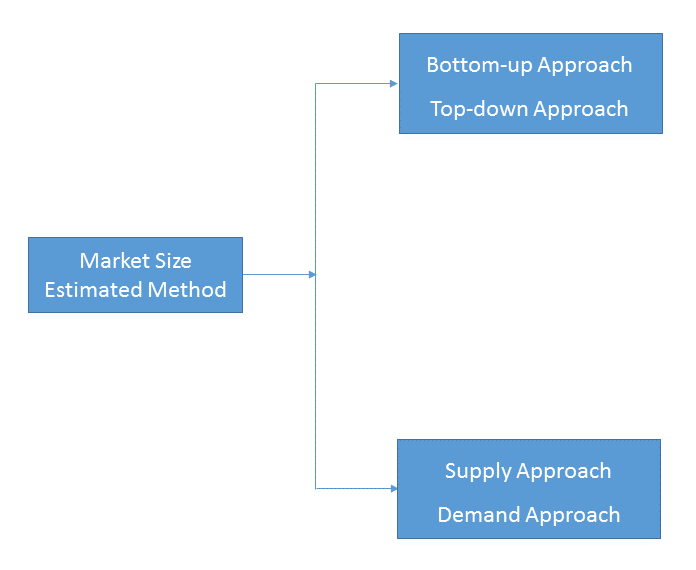
1)Top-down & Bottom-up Approach
Top-down approach uses a general market size figure and determines the percentage that the objective market represents.
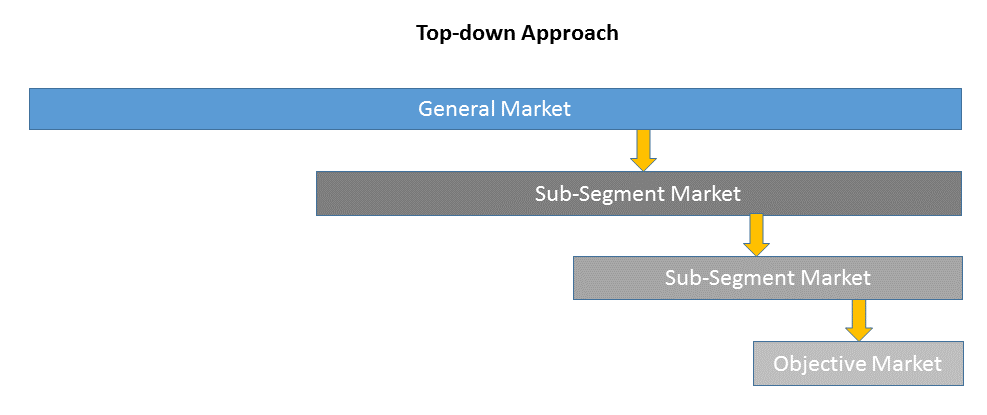
Bottom-up approach size the objective market by collecting the sub-segment information.

2)Supply & Demand Approach
Supply approach is based on assessments of the size of each competitor supplying the objective market.
Demand approach combine end-user data within a market to estimate the objective market size. It is sometimes referred to as bottom-up approach.
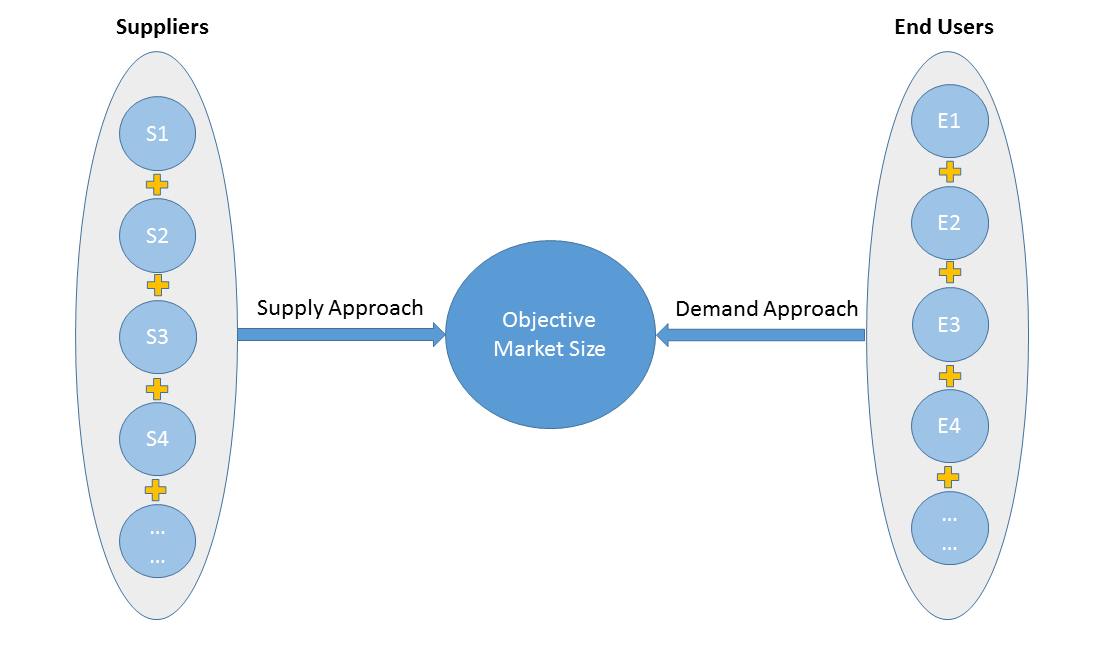
- Forecasting Methodology
- Numerous factors impacting the market trend are considered for forecast model:
- New technology and application in the future;
- New project planned/under contraction;
- Global and regional underlying economic growth;
- Threatens of substitute products;
- Industry expert opinion;
- Policy and Society implication.
- Analysis Tools
1)PEST Analysis
PEST Analysis is a simple and widely used tool that helps our client analyze the Political, Economic, Socio-Cultural, and Technological changes in their business environment.
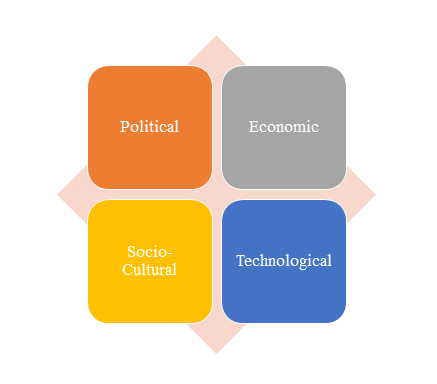
- Benefits of a PEST analysis:
- It helps you to spot business opportunities, and it gives you advanced warning of significant threats.
- It reveals the direction of change within your business environment. This helps you shape what you’re doing, so that you work with change, rather than against it.
- It helps you avoid starting projects that are likely to fail, for reasons beyond your control.
- It can help you break free of unconscious assumptions when you enter a new country, region, or market; because it helps you develop an objective view of this new environment.
2)Porter’s Five Force Model Analysis
The Porter’s Five Force Model is a tool that can be used to analyze the opportunities and overall competitive advantage. The five forces that can assist in determining the competitive intensity and potential attractiveness within a specific area.
- Threat of New Entrants: Profitable industries that yield high returns will attract new firms.
- Threat of Substitutes: A substitute product uses a different technology to try to solve the same economic need.
- Bargaining Power of Customers: the ability of customers to put the firm under pressure, which also affects the customer's sensitivity to price changes.
- Bargaining Power of Suppliers: Suppliers of raw materials, components, labor, and services (such as expertise) to the firm can be a source of power over the firm when there are few substitutes.
- Competitive Rivalry: For most industries the intensity of competitive rivalry is the major determinant of the competitiveness of the industry.
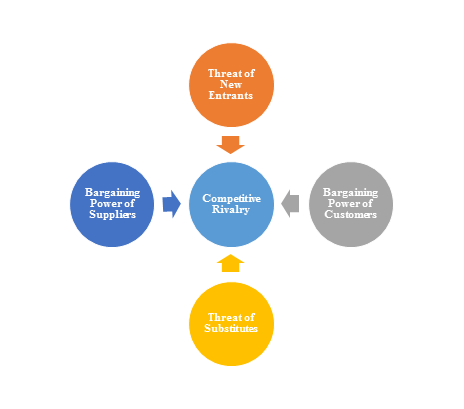
3)Value Chain Analysis
Value chain analysis is a tool to identify activities, within and around the firm and relating these activities to an assessment of competitive strength. Value chain can be analyzed by primary activities and supportive activities. Primary activities include: inbound logistics, operations, outbound logistics, marketing & sales, service. Support activities include: technology development, human resource management, management, finance, legal, planning.
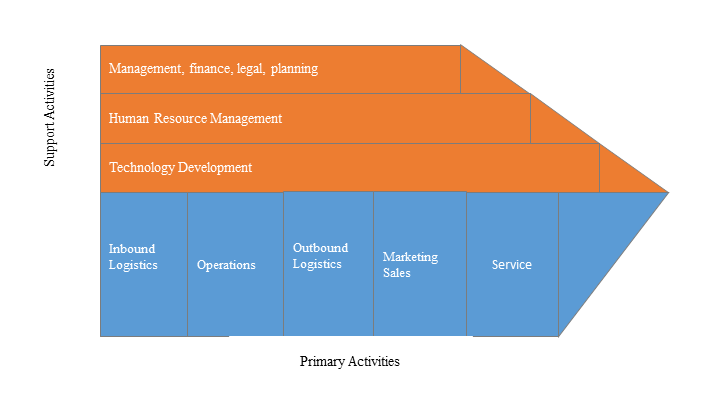
4)SWOT Analysis
SWOT analysis is a tool used to evaluate a company's competitive position by identifying its strengths, weaknesses, opportunities and threats. The strengths and weakness is the inner factor; the opportunities and threats are the external factor. By analyzing the inner and external factors, the analysis can provide the detail information of the position of a player and the characteristics of the industry.
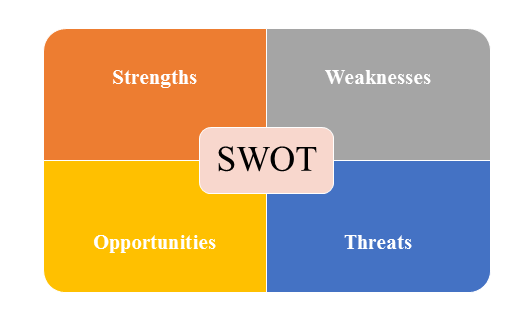
- Strengths describe what the player excels at and separates it from the competition
- Weaknesses stop the player from performing at its optimum level.
- Opportunities refer to favorable external factors that the player can use to give it a competitive advantage.
- Threats refer to factors that have the potential to harm the player.
- Data Sources
| Primary Sources | Secondary Sources |
|---|---|
| Face to face/Phone Interviews with market participants, such as: Manufactures; Distributors; End-users; Experts. Online Survey |
Government/International Organization Data: Annual Report/Presentation/Fact Book Internet Source Information Industry Association Data Free/Purchased Database Market Research Report Book/Journal/News |